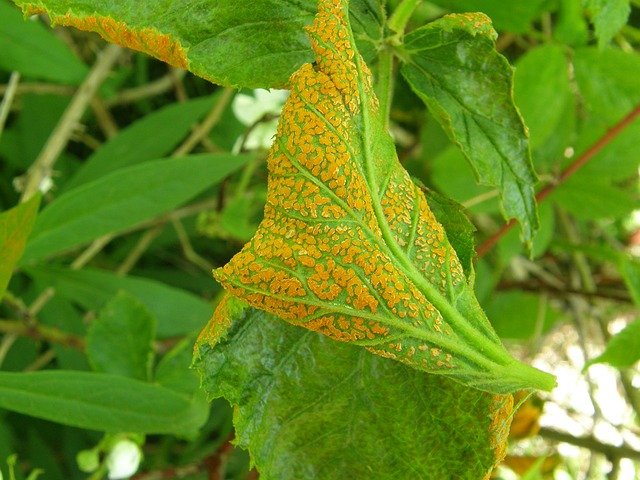
Learn about abiotic diseases.
There are two major types of diseases of woody ornamentals- biotic and abiotic- and abiotic diseases the most important. These diseases are the result of interaction between plants and factors such as lack of space for root growth, chronic or acute levels of air/water pollutants, or extreme moisture, heat or light, soil pH, and nutrients. Continue reading to learn more about abiotic diseases.
Extreme Moisture
Plants need enough water to grow, but too much moisture will cause their roots to drown. Roots can die from a lack of oxygen, so it’s essential to keep track of moisture extremes in your area. To diagnose problems caused by moisture extremes, check your local weather records to determine if rainfall is either lacking or excessive. Next, determine if the plants are being irrigated, how the water is applied, and how frequently it is being applied. Take a shovel and check the soil profile and root zone to determine if they are wet or dry. Also, be sure to check the drainage pattern, as runoff may be heading towards the plant. If a plant has been recently moved or if excavation has pruned away its roots, drought symptoms can occur even if the soil around the plant is moist.
Heat or Light Extremes
High light intensity of high temperatures can result in the breakdown of chlorophyll in a plant’s leaves. High light intensity of hot temperature can kill the cambium, or the growing cell layer under the bark of thin-barked trees, newly transplanted trees, and trees that have been freshly pruned. During this process, the wood shrinks and dries, eventually resulting in branch dieback.
Freezing is one of the most crucial abiotic factors in the landscape. Uneven light absorption by trees in the winter results in uneven thawing of water. If the temperature in a tree trunk drops too fast, the quick freezing and expansion of the water splits the bark of the tree, opening it to wood rotting and canker-causing fungi.
Nutrient Extremes
Plants need many nutrients to grow, including nitrogen, phosphorus, potassium, magnesium. There must be a balance among available nutrients, as too many can result in one nutrient becoming toxic to the plant. Symptoms of nutrient extremes or imbalances can vary by species of plant, the time when the toxicity began, and other growing condition factors. The soil pH also plays an important role; if the soil pH is too high or too low, some elements will be unavailable, and some may be available in toxic quantities.
Scientific Plant Service Is Your Go-To Source In Landscape Healthcare
Scientific Plant Service, located in Baltimore, is a privately-owned corporation, chartered in Maryland in 1957 by Frank J. Burke. We started as a full-service Arborist specializing in the care of shade trees and ornamental shrubs, but today we are a lawn and total landscape care company that is a huge part of the community. From aquatic environments and snow management to deer and mole control, SPS has services tailored specifically for your lawn and landscape.
We offer services in Maryland, Washington DC, and Virginia, including Harford, Baltimore, Carroll, Frederick, Howard, Anne Arundel, Montgomery, Prince Georges, Talbot, Queen Anne’s, and Calvert counties in MD, as well as Loudoun County, Fairfax County, Arlington, Alexandria, and Falls Church in VA. For more information, contact us online, or call us at 410-321-0970. Be sure to follow us on Facebook, Twitter, LinkedIn, and Pinterest!

